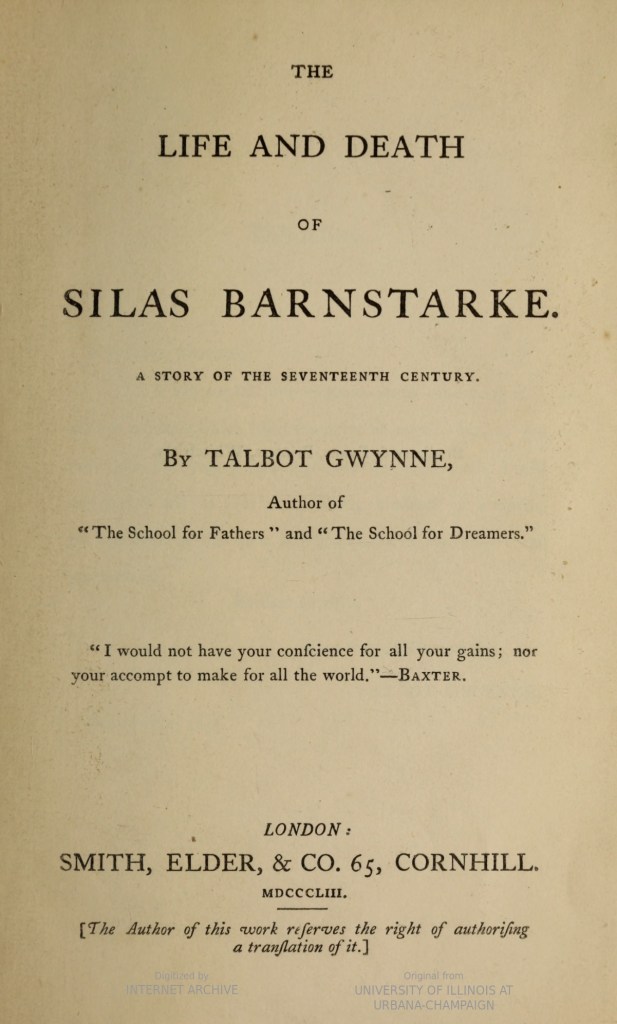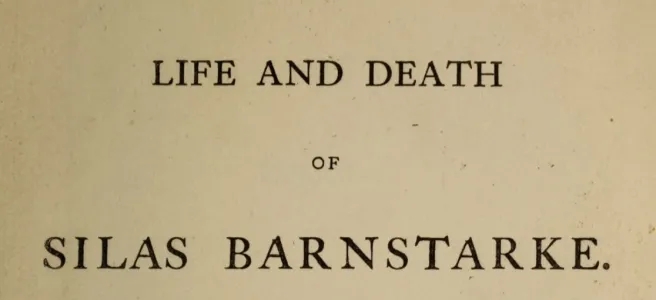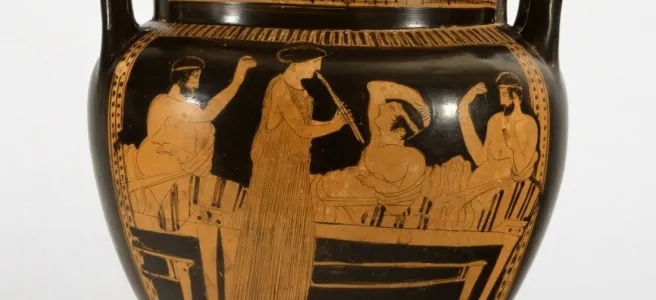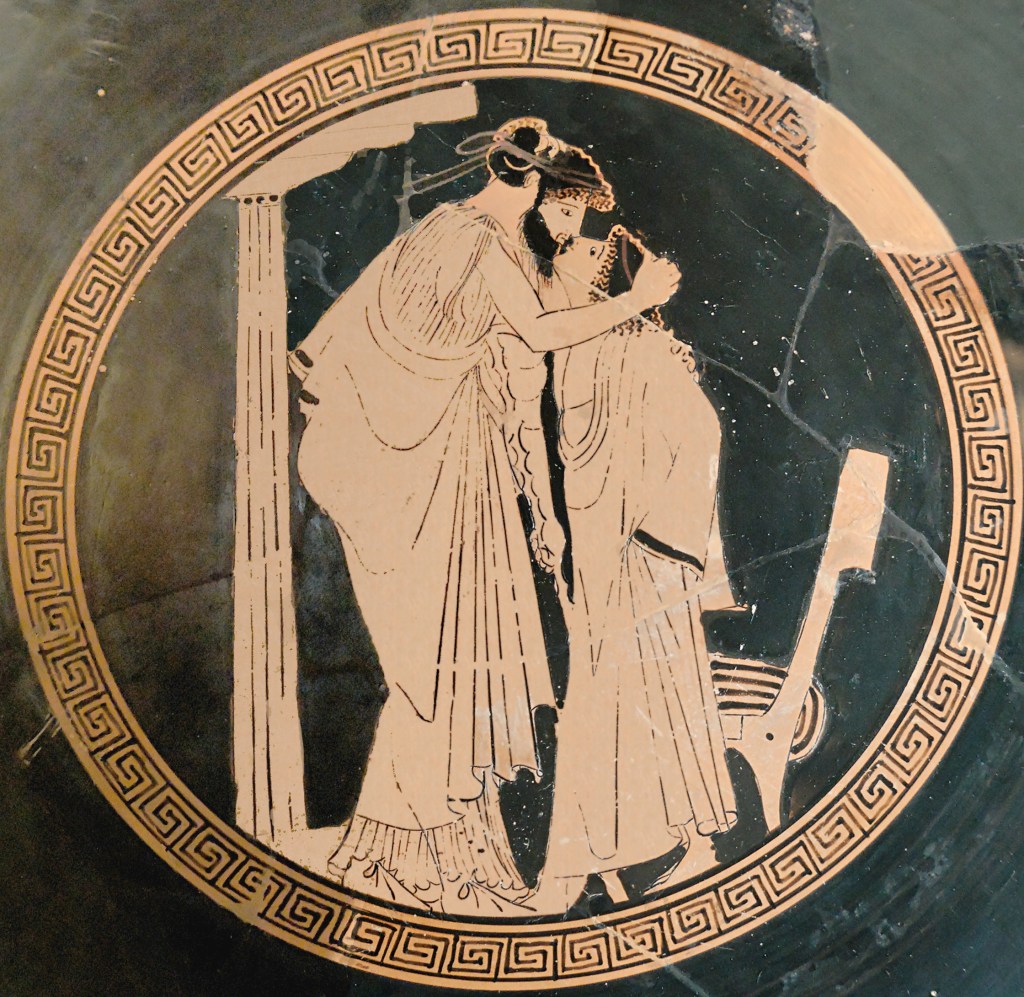Throughout the first volume of Symonds’s Letters, Symonds rarely writes about leaving a book unfinished. Often, Symonds discusses how engaged he is in his reading, from describing how “enchanted” he was with Berkeley’s Treatise Concerning the Principles of Human Knowledge to how he “devoured” Collins’s Woman in White (Letters, 158, 242). There are moments when Symonds describes a book as difficult, with one example being Spinoza’s infamously incomprehensible Ethics, but even then, he says that he reads it with “great labour, interest, & profit” (Letters, 296). The picture that the Letters paint of Symonds is a man deeply in love with his books.
This tone is somewhat to be expected. After all, these are the letters that Symonds sent to his friends and family; why would he talk about the books that bored him? Given how prolific Symonds was as a reader, many of the books he did not finish most likely would not have made their way into his Letters. So when Symonds mentions a book in his Letters that was so terrifying that he had to stop reading it, that book merits some attention.
That book is The Life and Death of Silas Barnstake by Talbot Gwynne1, which Symonds writes about in a letter to his father. Of the book, Symonds writes the following:
In the evening we had a great fright. We had got a book called Silas Barnstake by Gwynne from the Library, & I began to read it out. It was the most horrible beginning all about dying people, & winter’s nights, & diabolically hard hearted little boys, so that we had to relinquish it. But its lugubrious influence remained, & we fell to talking “ghosts,” robbers, etc. At last Edith was worked up to a climax, & said she could not sleep in her room (which was the best room, on the drawing room floor, with no one beneath her), & that she & I must exchange.
Letters, 162
In this letter, Symonds recalls a night of reading with his oldest sister Edith while staying in Edinburgh. According to the story, Symonds borrowed the book (presumably from the house library), read the book out loud, and stopped after he and Edith were frightened by the beginning of the book and its talk of “dying people, winter’s nights, & diabolically hard hearted little boys.” However, after they stopped and returned the book, they could not stop thinking about it, leading them to discuss it and other “scary” topics such as ghosts and robbers until, at some point, Edith was so scared that she could no longer sleep in her room and asked a young Symonds to swap rooms with her for the night.
At first glance, Symonds’s and Edith’s experience in this letter feels like a common childhood response to reading a scary story: they read it, they were scared by it, and they were unable to stop thinking about it to the point that it prevented them from sleeping normally. If Symonds and his sister were children at the time of this letter, then this would seem to be a normal response. However, this letter was written on September 28th, 1858. For reference, Symonds was born in 1840 and started at Oxford in 1858, close to the time that this letter was written (Memoirs, 169). Meanwhile, we know that Edith, Symonds’s “eldest sister,” is at least 20 at the time of this letter2 (Memoirs, 181). Rather than a story of two young children responding to a scary book, the incident described in the letter involves an Oxford student and his 20-odd-year-old sister being so terrified of a book that the older sister had to ask her 18-year-old brother to swap rooms with her. While such an event is not impossible by any means, it is undoubtedly strange.

Public domain via HathiTrust (accessed https://hdl.handle.net/2027/uiuo.ark:/13960/t77t0ww4h)
What about The Life and Death of Silas Barnstake managed to scare the two of them so much? And how should we interpret their fear? Just from the letter, it is impossible to tell exactly how far into the book Symonds read that night. However, the three aspects he mentions, “dying people, winter’s nights, & diabolically hard hearted little boys,” all appear within the first twenty pages of the book, which detail Silas’s mother dying from childbirth, his father dying from grief, and Silas’s separation from his little brother Walter (Gwynne, 1-20). What is strange about these first twenty pages in relation to Symonds’s story is that they do not seem to be scary in a traditional sense. For example, the description of a winter’s night starts off the book, as Gwynne writes, “The night was dark – dark with the melancholy, mysterious blackness of a winter midnight, and so still that distant sounds seemed near at hand” (Gwynne, 1). The note about diabolically hard-hearted little boys seems to reference Silas’s cold character, especially in relation to his grieving father and Silas’s “thoughtless questions and remarks” (Gwynne, 7). Finally, there are two descriptions of death within the first twenty pages, one being Silas’s mother’s death and the other his father’s. However, these descriptions seem grim and sad, as opposed to something that would inspire fear or terror. Consider the following passages:
[Edmund Barnstake] stept [sic] up to the bed where lay his wife: she feebly put forth her hand. He took it in his, which were cold and trembling. His words choked him: to speak was, to him, impossible.
The night was over, day was breaking, and the snow still fell from the clouds; the clouds that hung so low, that were so sad-looking, grey, dark, and heavy.
The light still burned in the room where throughout the night Barnstake had watched, or wearily slept. The cull light of morning struggled with that of the candle, giving a melancholy air to the large low room, and seeming to add to the chilly cold of the now fireless chamber.
Barnstake sat before his table, his arms folded and resting on it, whilst his face was buried in his arms.
He remained motionless for hours, with teeth tight set, and brows knit closely together; whilst a mown burst from him at rare intervals.
In the room above, behind the closed curtains of the ponderous, dark bed, lay the clay-cold body of his wife.
A sound rang through the still air and smote his ear.
It was the tolling of the church bell, announcing that a soul had passed away.
Gwynne, 4-5
Delirium soon seized him, during which he raved of the happy days of his love, nor seemed once to dream of his loss and sorrow. For many days, for many nights, he raved, muttered, and wearily tossed in his burning bed.
A fortnight after the burial of his wife, [Edmund] Barnstake, an unconscious corpse, was placed beside her. He had died without recovering the senses which pain and fever had scared away. Thus, within but a brief space of time, were Silas and his little brother left orphans.
Gwynne, 17
Examining the prose, none of it fits what today would be considered “scary.” The descriptions of the sky and Silas’s uncompassionate nature are not only strange candidates for something “scary,” especially for two people eighteen and above, but are also extremely short, to the point that it would be difficult to imagine them inducing terror. Meanwhile, the descriptions of death are undoubtedly saddening (which explains Symonds’s use of the term “lugubrious”), but not fear-inducing. So why does Symonds express his night reading The Life and Death of Silas Barnstake as “a great fright?”
What makes slightly more sense here is to interpret Symonds’s fear not as terror, but as a sort of existential dread. After all, Symonds’s mother died of scarlet fever when he was only four (Memoirs, 63). Maybe Gwynne’s descriptions of death were a little too familiar, either raising memories of their mother or worries about the possible death of their father. Symonds also acknowledges that talk of his mother was scant during his childhood and that his father “showed no outward sign of grief, and said nothing” about his mother’s death (Memoirs, 63-64). This reluctance might have represented a taboo regarding discussions of mourning and familial death. Gwynne’s descriptions would then have personally resonated for Symonds and his sister, on a topic that they had for a long time avoided.
While this interpretation is stronger, it does not yet account for Symonds’s own feelings about his mother’s death. Symonds notes in the Memoirs that he has no “distinct memory” of his mother and that he had not “exactly felt the loss of her” (Memoirs, 63-64). Instead, Symonds describes his feelings around his mother’s death as a sort of “vague awe” at the “mystery” of death (Memoirs, 64). With his mother’s death occurring so early in Symonds’s life, Symonds’s impassionate tone here makes some sense. However, Symonds’s feelings are not completely opposed to this interpretation. For example, Symonds’s lack of connection with his own mother explains why Edith’s response to reading Silas Barnstake was much more powerful than his, as she almost certainly had more experience with their mother due to her elder status. Nevertheless, the question of why Symonds was affected so much despite that lack of connection remains unanswered.
One interesting possibility is that it is precisely that lack of connection that led Symonds to resonate with Silas Barnstake to such an extent. In the Memoirs, Symonds himself laments that he lacked that connection with his mother, worrying that he was “heartless and sinful” because he did not feel more (Memoirs, 64). Even though Symonds admits that those feelings were irrational due to that lack of physical connection, it is apparent that, when it came to writing the Memoirs, some of those thoughts stuck with him. These thoughts might explain why he found Gwynne’s “hard hearted little boys” so troubling. He might have seen a reflection of himself in the character of Silas Barnstake, a young boy, uncaring and dispassionate despite the death of someone close to him. It most certainly was not a positive reflection of Symonds’s character, which might have been why he decided to stop.
There are some parts of the story that are still unexplained. For example, why does Symonds makes note explicitly of the descriptions of night –which, while vivid, do not evoke the same sense of dread that the descriptions of death do? Why did Symonds and Edith, after being reminded of the death of their mother and facing a feeling of existential dread, choose to discuss “robbers” and “ghosts” (Letters, 162)? These questions are left unanswered. So, for a reader as prolific as Symonds, the reason why he stopped reading The Life and Death of Silas Barnstake is still up for interpretation.
It is very possible that Symonds’s story in this letter and The Life and Death of Silas Barnstake are insignificant blips in the story of Symonds’s life. However, to note a book in a letter, especially one to a parental figure, implies that the book held some significance, and, for a reader like Symonds who writes prolifically about how engaged he becomes with the texts that he reads, the one text that he not only drops within a night but notes to his father raises a few questions. The possibility that the reason he stopped was that the book and its rather mild prose evoked an overwhelming sense of terror or dread while he and his sister were both above the age of 18 raises a few more.
1 Talbot Gwynne is a masculine pseudonym used by Josepha Heath Gulston. As the gender of Talbot Gwynne/Josepha Heath Gulston is unclear, for the purposes of this blog post, I have avoided using any gendered pronouns in describing them.
2 Symonds notes that another one of his elder sisters, Mary Isabella (Maribella), was born in 1837 (Memoirs, 68). As Symonds describes Edith as his eldest sister, we know that Edith was born at earliest in 1837, meaning that she was around 20 in 1858 when this letter was written.
Gwynne, Talbot. The Life and Death of Silas Barnstake: A Story of the Seventeenth Century. Smith, Elder, & Co. London, 1853. Accessed https://hdl.handle.net/2027/uiuo.ark:/13960/t77t0ww4h
Symonds, John Addington. The Letters of John Addington Symonds, edited by Herbert M. Schueller and Robert L. Peters, vol. 1, Wayne State University Press, 1967.
Symonds, John Addington. The Memoirs of John Addington Symonds: A Critical Edition, edited by Amber K. Regis, Palgrave Macmillan Publishing. London, 2016.



